




With the rise of social media platforms, we have seen many before-and-after reveals. The side profiles. The transformations. The endless parade of celebrity nose speculation.
But beneath the filters, the swelling timelines, and the surgery hashtags, rhinoplasty remains one of the most deeply personal, and misunderstood, procedures in plastic surgery.
Dr. Adam Kolker, a top plastic surgeon in New York City, has become a go-to expert for patients who want their noses to look like the best version of themselves, not someone else’s nose on their face. With a background in biology and fine arts, and nearly two decades of surgical precision, his approach is more sculptural than subtractive. Dr. Kolker’s plastic surgery approach is built on the belief that a good rhinoplasty doesn’t transform you into someone else, it quietly reveals a more refined version that is in harmony with the rest of your facial features.
Let’s unpack the myths, the method, and why this procedure is still one of the most nuanced in aesthetic medicine.
First and foremost, a rhinoplasty is not about chasing perfection, it’s about restoring harmony. A rhinoplasty procedure reshapes the nose to enhance facial balance and improve nasal function. That might mean refining a bulbous tip, smoothing a dorsal hump, correcting asymmetry, or even improving airflow for patients with structural issues. A rhinoplasty is also not always simply about subtraction. In some cases, cartilage is added or repositioned to provide more structure or symmetry.
Dr. Kolker describes a rhinoplasty as “equal parts aesthetic finesse and architectural strategy.” And that dual purpose of form and function, is exactly what makes it one of the most technically demanding procedures in the field.
Every rhinoplasty starts with a thorough consultation: medical history, facial analysis, and a candid conversation about a patient’s goals and desires. Often times during a rhinoplasty consultation, we will use computer renderings to reveal what a rhinoplasty transformation can look like.
Dr. Kolker believes this is where the artistry begins. “We use digital imaging not as a promise,” he says, “but as a visual dialogue. It helps us align expectations and make thoughtful decisions together.”
Consultations also involve evaluating internal structures, including the septum, nasal valves, and turbinates. In some cases, patients are surprised to learn their aesthetic goals can align with functional improvements, like breathing more clearly or eliminating nasal congestion or a deviated septum that they did not know was abnormal.
This isn’t a one-size-fits-all situation. It’s not about trends or celebrity noses. It’s about designing something that makes sense for you, from every angle.
No. A rhinoplasty is not simply a quick sanding of the bridge of the nose. It’s a 3D procedure involving bone, cartilage, soft tissue, and airflow mechanics.
Dr. Kolker approaches each surgery with a blueprint-level understanding of anatomy and the experience to know what to refine and what to preserve. In many cases, reshaping one area means adjusting another for balance.
Removing a dorsal hump, for example, might require subtle tip rotation or narrowing the nasal base to maintain proportion. It’s not only about what comes off, but also about what remains, and why.
Technically, some results will be visible immediately; however, the full reveal requires patience. Especially when it comes to swelling around the nasal tip.
"You’ll see a new shape emerge over time," Kolker explains. “The final result usually settles within 12 months. It’s not a sprint, it’s a sculpt.”
Early on, patients often experience a confidence boost just from seeing their new profile; however, the finished result comes with time. Swelling diminishes gradually and most noticeably between months three and nine.
In the right hands, a rhinoplasty shouldn’t look like surgery; it should appear like a subtle evolution.
Dr. Kolker’s patients often say the best compliment they get is when people can’t quite put their finger on what’s different. He designs noses that blend in invisibly in the best possible way.
"You want people to see you, not your nose."
Dr. Kolker is known for his natural and subtle results in all his rhinoplasty procedures. It is through his artistic eye and skilled precision that he is able to produce the best rhinoplasty outcome for his patients.
Often patients bring photographs of what they would like their aspirational nose to be, however it is important to note that you can’t borrow someone else’s bone structure. A good surgeon won’t recreate a celebrity’s nose; they will design a nose that fits your face from all angles, not just in a filtered selfie.
Facial anatomy is as unique as a fingerprint. What flatters one person can throw another’s entire facial harmony off-kilter. During your consultation, Dr. Kolker will demonstrate how subtle changes can help you achieve your goals while preserving your unique features.
Actually, many patients experience improved breathing after surgery.
"We often address deviated septums or collapsed nasal valves at the same time," Dr. Kolker notes. "The goal is not just aesthetic, it’s functional wellness, too."
This is where artistry meets engineering: a reshaped nose that supports airflow instead of working against it.
Short answer: Insurance will not cover a purely cosmetic procedure. However, if you have documented nasal obstruction (like a deviated septum or airway collapse), parts of the surgery, such as septoplasty, may be eligible for partial coverage. This is something to discuss directly with your insurance carrier.
Dr. Kolker walks patients through this process so there are no surprises. Transparency is key.
There are two surgical methods: open rhinoplasty, which includes a small external incision between the nostrils, and closed rhinoplasty, where incisions are hidden inside the nose. Each has its advantages depending on the structural changes needed.
Open approaches allow for greater visibility and access, ideal for complex revisions or intricate tip work. Closed rhinoplasty may be preferable for isolated changes or cases where minimal disruption is ideal.
Dr. Kolker tailors the approach based on your anatomy and goals. "There’s no default technique," he explains. "It’s about choosing the method that allows for the most refined, least invasive enhancement."
In a world of injectables, threads, and fillers, rhinoplasty remains the best procedure for facial refinement. It’s permanent. It’s precise. And when done well, it doesn’t scream “plastic surgery”, it whispers confidence.
Today’s rhinoplasty is less about big changes and more about micro-adjustments that reshape identity through balance, not boldness.
Whether you’re correcting a post-injury shape, breathing issues, or just seeking better facial symmetry, the best rhinoplasty doesn’t change who you are. It reveals a version of you that feels more aligned, more intentional, more at ease in the mirror.
If you are considering a rhinoplasty, schedule a consultation with Dr. Kolker to best understand your options and possibilities. His thoughtful approach seamlessly blends anatomy, aesthetics, and empathy to achieve results that look and feel uniquely your own.
To schedule a private consultation with Dr. Kolker, please call the office or request an appointment online. We welcome your visit.
710 Park Avenue, New York, NY 10021